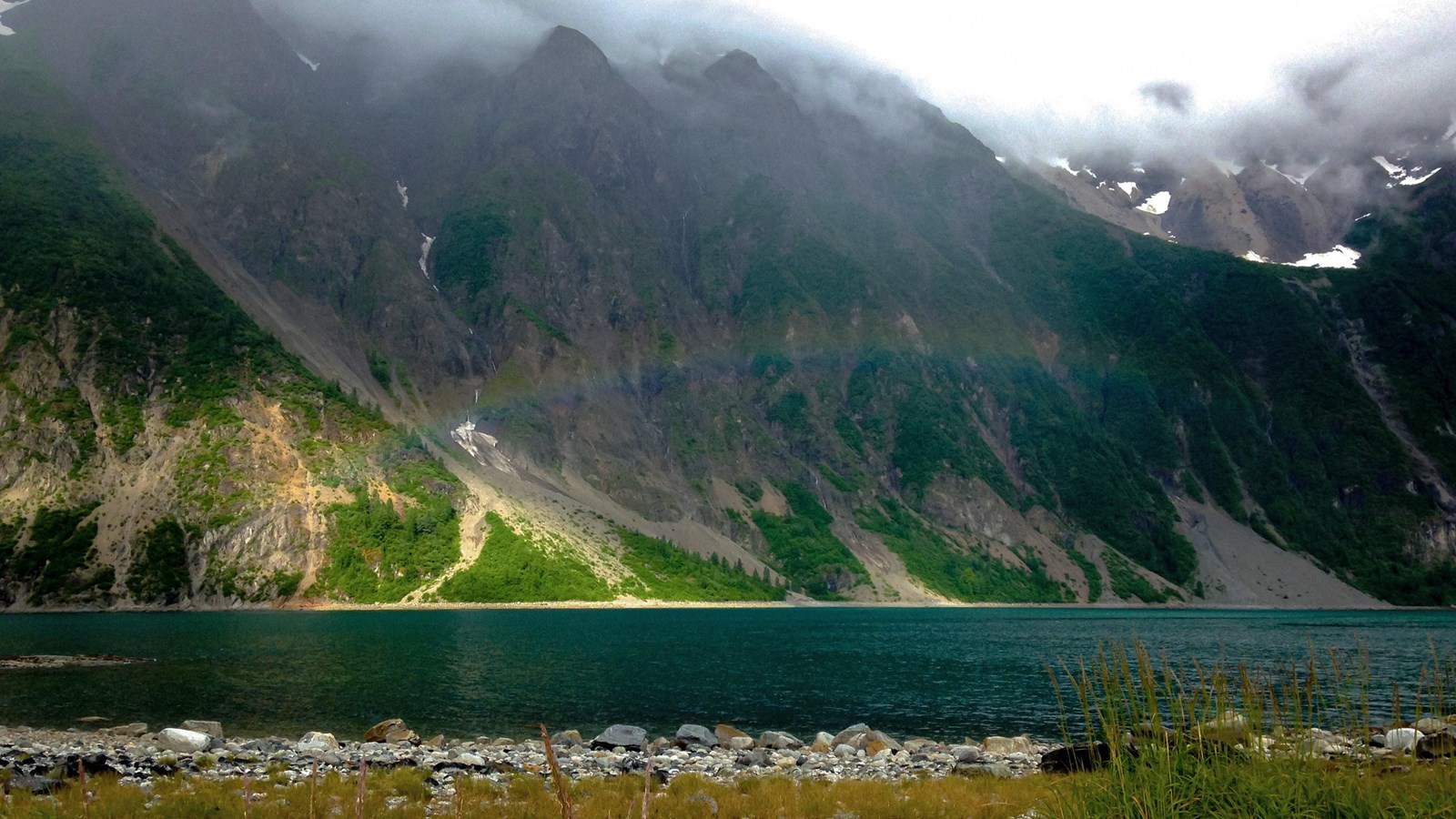Last updated: March 6, 2024
Place
Glacier Recipe: What Makes a Glacier in the Bay?

NPS Photo
There are two main ingredients for glaciers: precipitation and elevation; and Glacier Bay has plenty of both! Glaciers are made from snow – lots of snow. The Gulf of Alaska, one of the stormiest places in the Pacific Ocean is just 30 miles to the west of the glacier bay fjord. Between the fjord and the ocean is one of the highest coastal mountain ranges in the world – the Fairweather Mountains. Now imagine what happens when those Gulf of Alaska storms filled with ocean moisture crash into a 15,000 foot mountain range - snow flies, lots of it. An estimated 100 to 150 feet or 30 – 45 meters of snow fall each year on the Fairweather Range. The combination of low temperatures at high altitude and the massive amount of snowfall creates a condition where the ice and snow does not melt away in the summer months. Year after year snow builds up and compresses into solid ice – Glacier Ice.
Now, there is a third vital component – time. Time for the snowflakes to amass and compress into ice. Time for the dense, compact ice to overflow and move downhill by the force of gravity. Time to form rivers of ice.
Glaciers are essentially rivers of ice. They creak and groan as they move downhill. Some reach the ocean at sealevel, called tidewater glaciers, where they break off and form icebergs. Others flow in valleys or cling to mountainsides.
Glacier Bay has thousands of glaciers, all remnants of the one massive sheet that covered Glacier Bay 300 years ago. The number of glaciers in Glacier Bay is decreasing, due to the continued diminishing of glacial ice as global temperatures rise, reducing habitat condusive to the formation of glaciers.
